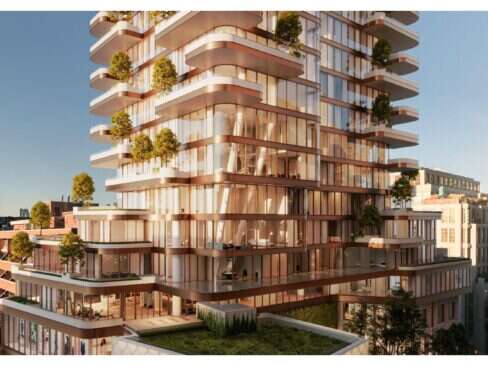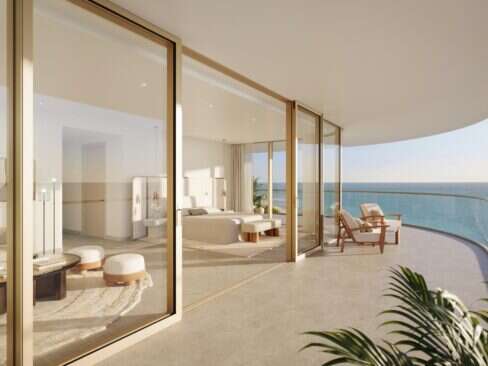Last year was “the great real estate shuffle”, as one luxury broker calls it, as people’s lives were upended and their jetsetting grounded. Luxury real estate market trends in the West broadly saw a boom due to rapidly changing priorities, but others have felt the pinch. Until borders safely reopen, recovery for developing economies feels a long way off.
Analysis of data from Knight Frank’s 2021 Prime International Residential Index shows that, of 100 city markets tracked, two-thirds saw prices go up in 2020, with an average growth of 4.5%. Auckland saw the most growth, with prices up by 17.5%, after a small dip in 2019. Of the 100, 29 cities saw prices decrease in 2020, with an average hit of -3.8%. Bangkok, Cape Town and Buenos Aires were worst affected.
The US was particularly resilient, with the nine luxury markets tracked averaging 6.1% growth (or 7.5% without New York, the only US market that saw a loss). Despite months of lockdown in which agents couldn’t show properties, there was growth in the number of sales and prices, with people in particular seeking out larger properties with rooms for home offices and remote schooling, as well as ample outside and indoor space for entertaining.
[See also: Private Jet Industry Trends Upwards Due to Covid-19 Pandemic]
Kevin Sneddon, founder of The Private Client Network at Compass calls this “the great real estate shuffle” as people have adjusted to working and learning remotely, and have looked for the perfect place to live out the pandemic.
“As everyone wants more out of a home – and more out of living – everyone seems to be in some sort of a living transition,” he says. “Working remotely has given people a new level of freedom to live and work wherever they like and they have taken full advantage of this opportunity.”
But the scale of growth wasn’t global, and the differences across the globe were driven by a key unique factor of the Covid-19 crisis: the extreme restrictions on global travel. This meant that the surge in real estate activity was largely restricted to domestic markets. So while luxury markets in the US, Canada and China, which have many UNHWs, thrived, the prime markets in less wealthy countries did not – the three African luxury markets tracked averaged a loss of 5.5%.
Escape to the country
Those who might have sought to purchase luxury homes overseas to wait out the crisis have instead been looking to luxury locations closer to home.
“People wanted to keep their homes in the city, but invest in a larger ‘safe haven’ home in the country or by the beach to use when needed,” says Scott Durkin, President and COO of Douglas Elliman, with markets such as the Hamptons seeing huge activity.
The strong impact of this domestic-driven market can be seen in results from Knight Frank’s Attitudes Survey. Polling wealth managers from across the world, Knight Frank found that when buyers were mostly limited to their domestic markets, their priorities shifted dramatically.
Countries with highly developed luxury markets beyond the cities such as the UK countryside, Swiss skiing and New Zealand’s beaches, saw a huge increase in interest. Less developed domestic leisure residential markets saw the opposite. And while Europeans shunned cities for rural or coastal living, the Chinese favored urban property, which is still seen as the aspirational lifestyle.
[See also: Tuck in at the New Aston Martin Residences in Miami]
“I think the narrative in the West has very much been about this escape to the country, which we’ve certainly seen both in the UK and across Europe so places like Provence, Tuscany, the Alps,” Kate Everett-Allen, Knight Frank’s head of international residential research, says. “But in Asia, if you are in a city center and you want more space, you would buy a property perhaps on the periphery of the city, or somewhere near a park maybe. You certainly wouldn’t look to move back to rural locations.”
Everett-Allen says that a key trend, particularly in the US and Europe, has been a shift from “first” and “second” homes into what they call a “co-primary home”. Buyers who might have usually spent short periods of time at their leisure residence, now hope to spend weeks or even months there. And brokers say they are seeing this directly correlate with a rise in clients’ expectations, as they look for the same luxury and amenity they would usually demand from their primary residence.
Although this year more than ever, people have prioritized seclusion in their luxury properties, Everett-Allen said there is a distinct difference between secluded and “isolated”. People want freedom from health fears, steering away from packed cities and condos with shared elevators and common spaces. But they still want to be well-connected in terms of healthcare access, transport links, and high-speed internet.
“While everybody’s talking about this quest for rural locations, there is a sense that they’ll only go so far,” says Everett-Allen. “They still want to be able to get their Amazon delivery.”
Reevaluating life choices
But does this mean we will see these shifts reverse, as soon as the skies reopen? In places such as Auckland and Vancouver, Everett-Allen says, locals have been making their moves quickly, conscious that prices will only rise as the borders reopen. As international players begin to re-enter the market, they may find that some of the best quality stock has already been snapped up.
Key to watch over the next year will be which governments bring in policies that affect the real estate market – already we have seen New Zealand planning tax reform to slow house price growth, while the UK has extended the stamp duty holiday.
Of course, even when the pandemic is over, the threat of the virus is unlikely to ever truly disappear, so balconies and outdoor space will remain desirable. And while remote and flexible working remains a semi-permanent reality, home offices, high-speed internet and global mobility are still going to be key factors shaping people’s real estate decisions.
But the most lasting change is far more philosophical, as people take this opportunity to reevaluate their life choices. Those who have been considering a major second home purchase overseas for years will now be taking that leap, and those now prioritizing wellbeing may never go back to their old ways.
“The pandemic has allowed people to stop and reflect, and take stock of their lives and where they want to be,” says Everett-Allen. “And I think increasingly there’s that sense that, you know life is for living and we need to make the most of it.”










